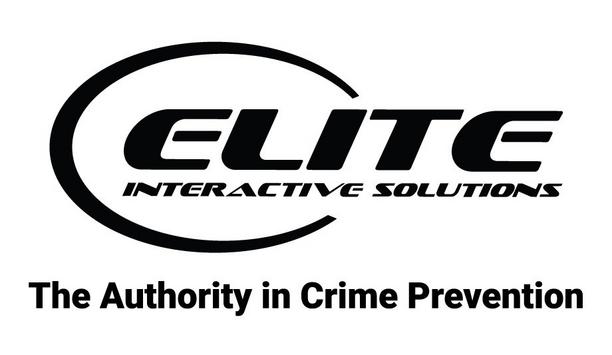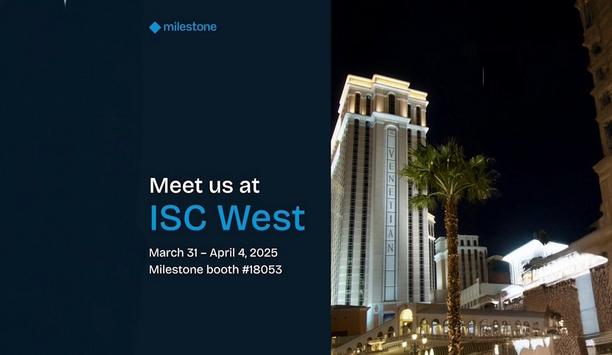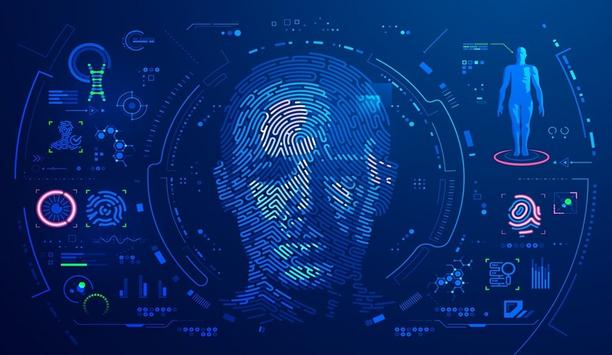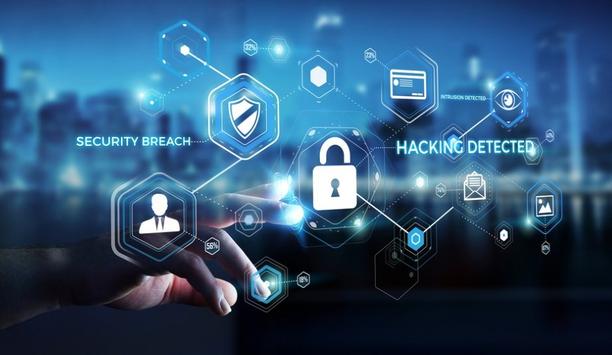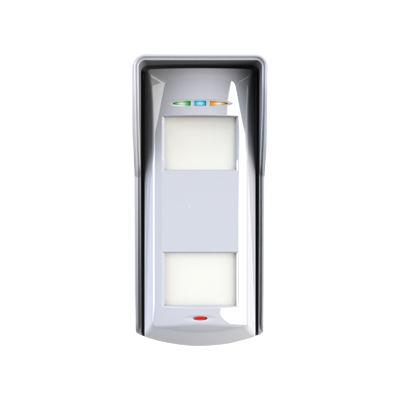Crime prevention
Elite Interactive Solutions, a remote video guarding pioneer using proprietary intelligence and integration to achieve proven crime and catastrophe prevention, announces that the company was selected this month as one of three finalists for The Monitoring Association’s (TMA) 2025 Excellence Awards. The prestigious program nominated Elite for its highest honour, Monitoring Centre of the Year. The TMA Excellence Awards recognise any FM-Approved, Intertek/ETL or UL‐Listed monitoring centre a...
The Association of University Chief Security Officers (AUCSO) - the pioneering global organisation for security professionals in Higher and Further Education - has celebrated the outstanding achievements of its members with the announcement of the winners of its prestigious 2025 Annual Awards. This year marked a record-breaking number of submissions across all award categories, highlighting the exceptional work being carried out on university campuses both in the UK and around the world. The wi...
Elite Interactive Solutions, a remote video guarding pioneer using patented intelligence and integration to achieve proven crime prevention, recently gathered law enforcement officials to its headquarters for a special invitational lunch-and-learn event. The function exemplifies Elite’s multifaceted mission to strengthen private-public partnerships by educating officers on how remote guarding directly prevents crime and protects properties in real-time, eliminates false alarms, boosts law...
Kollmorgen servo motors are now available with our fourth-generation SFD-M smart feedback device. Offered at no additional cost over Kollmorgen’s earlier SFD models, this encoder offers four times greater positioning accuracy and uses energy-harvesting technology to track absolute multi-turn positioning even when the system is powered off. Revolutionising motion feedback SFD-M allows machine builders to achieve high-resolution multi-turn feedbackKollmorgen, a global pioneer in motion co...
The Minister for Safeguarding and the Minister for Security have both agreed to the appointment of two new non-executive directors to the Board of the SIA. Hannah Wadey and Stephen Grainger were appointed to the Authority from 24 March 2025. Hannah Wadey is the CEO of the Safer Business Network. She has 20 years’ experience in community safety, security, and crime prevention. Hannah has a proven track record of delivering strategic change in public safety an...
Milestone Systems, a pioneer in video technology software, is exhibiting and speaking at ISC West 2025, taking place in Las Vegas, March 31–April 4. This marks the company’s 22nd time participating in the premier industry event. At ISC West, Milestone will present the new product suite as well as a range of new solutions within public safety and hybrid and cloud deployment. Unlocking the full video data For the first time, Milestone will present the expanded suite of pro...
News
The UK’s Security & Policing 2025 expo opened in Hampshire, bringing together government officials, law enforcement agencies and policing-tech vendors to discuss the latest developments in public safety and security. This year the event will focus on counter-terrorism, border security, cyber threats and the use of AI in policing. Tech companies to watch Thales will showcase its AI-driven border security solutions, which are designed to support identity verification processes at international checkpoints. The company has been involved in developing systems used in automated border control and passenger screening. NEC Corporation will present its facial recognition systems, which have been deployed in various public security settings. AI-based video technology Digital Barriers is a provider of AI-based video technology aimed at enhancing real-time decision-making The Japanese company’s technology has been used in airports, transport hubs and by law enforcement agencies for identification and verification purposes. Digital Barriers is a provider of AI-based video technology aimed at enhancing real-time decision-making for law enforcement, public safety and other critical sectors. The company’s secure edge platform and patented video compression tech are used across various industries including city law enforcement, defense, transportation and events, to provide instant insights from real-time video feeds. Facial recognition in UK policing The use of facial recognition technology by UK police continues to expand. A recent transparency report from Essex Police detailed the results of 38 deployments of live facial recognition. Over 383,000 match attempts were made using software from Corsight AI and Digital Barriers, with only one false alert recorded. During these operations, the system generated 61 alerts leading to 11 arrests, including suspects wanted for assault and sexual offenses. AI-driven surveillance tools Police statistics show that these tools help speed up studies and improve public safety The accuracy rate of the technology, according to the report, was 99.9997%. With rising crime rates and growing security concerns, facial recognition and AI-driven surveillance tools are becoming more widely adopted. Police statistics show that these tools help speed up investigations and improve public safety. Corsight AI will also present its advanced facial intelligence platform at Security & Policing 2025, showcasing its capabilities in real-time watchlist alerting and forensic investigations. Future of AI in crime prevention Corsight AI President Rob Watts commented on the growing demand for AI-driven policing solutions: "In many regions, we are witnessing an increase in violent crime and various threats to personal safety. This directly fuels the demand for effective and efficient law enforcement, often including the implementation of facial intelligence tech for real-time watchlist alerting and after-the-fact forensic investigations." "If you're a Western police force needing to reliably identify people in real-world conditions like outdoor darkness and in motion, you have very few options." Security & Policing 2025 will provide a platform to explore these issues further, as law enforcement agencies and tech providers look at the future of AI in crime prevention and public security.
ATRIUM is an online access control system that makes robust security its top priority. With military grade encryption throughout the system, ATRIUM ensures card cloning is practically impossible and data is kept safe. Plus, there’s no tedious programming – everything is ready to go right out of the box. ATRIUM makes high security easier than ever and puts people in control of their data. Seamless and encrypted access control ATRIUM automatically creates unique authentication keys using proprietary protocolFrom the credential to the reader, reader to controller, and controller to ATRIUM server, all the transfers of data in the ATRIUM system are protected by AES encryption. There’s no greater security for the customers’ data. And there’s no learning curve and no extra programming. Just install it the same as always. All that is added is a significant boost to the peace of mind of customers. With AES encryption, the risk of card cloning is reduced to almost zero. ATRIUM automatically creates unique authentication keys using proprietary protocol, ensuring that only authorised individuals can gain access to a property. As a result, the risks of a security breach through cloned or intercepted credentials are eliminated. That’s a big weight off the customers’ minds! Unbreakable security and protection AES encryption key using brute-force methods safety is assured, ensuring unparalleled peace of mindWith current technology, it would take millions, if not billions of years to crack an AES encryption key using brute-force methods. When choosing ATRIUM, users are choosing a system that ensures high security and robust access control for years to come. And once again, an unprecedented level of peace of mind is provided to customers. For security officers and business owners, knowing their access control system is so strongly fortified makes a big difference. According to IBM, the average cost of a data breach last year was close to USD $5 million. And that’s not to mention the disruption and damage to an organisation’s reputation. Any system that guards against that risk is worth its weight in gold. Why choose ATRIUM access control? End-to-end encryption: Military grade encryption at every stage. Enhanced security: Eliminate the risk of card cloning. Free training: Online and in-person training is free and accessible to anyone. Expert support: Dedicated technical teams are there to support when a helping hand is needed.
Over the last 10 years, threats to the UK, including espionage, terrorism, cyber-attacks, and disinformation, have increased dramatically in volume and velocity. Globally, multiple state-on-state conflicts pose serious risks, with the potential to escalate into both intra and intercontinental struggles. Range of sub-sectors Private Equity activity across Security-Tech has continued to grow year-on-year, with 191 direct investments made since 2018 across a range of sub-sectors. These include Safety & Security, Risk & Crime Prevention, Identity Technology, Intelligence and Surveillance, Communication Technology, Cyber Security, Defence and Frontier Technology. According to Heligan, as threats evolve, Private Equity investment is crucial for accelerating innovation and market readiness and maintaining the operational edge over adversaries. Approaches in other security and defence sectors Security-Tech investment has accelerated across different regions of the UK, with 89 transactions Security-Tech investment has accelerated across different regions of the UK, with 89 transactions in the Southeast from 2018-2024 and 25 in the Midlands, with deal activity also rising in the Northwest and Scotland. Matt Croker, Director at Heligan, said, “Cyber security remains a standout sector for Private Equity, offering scalable, recurring revenues and a fragmented market ideal for buy-and-build strategies that enhance returns. While Private Equity is now exploring buy-and-build approaches in other security and defence sectors, this trend is emerging but is expected to grow quickly." Renewed focus on national security Croker added: “More broadly, 2024 was a record year for new investments. Although volumes dipped in 2022 and 2023, activity remained robust and looking ahead, 2025 could exceed the level of activity experienced in 2024." "Government priorities have shifted with a renewed focus on national security amid conflicts like Ukraine-Russia and Israel Middle East. This geopolitical instability has driven structural change in governmental mindsets and budgets, expanding addressable markets - a crucial factor for investors." Demand for innovative dual-use technologies “The defence and national security technology industry is transforming significantly in response to increased challenges”, added Croker. “The government's increasing demand for innovative dual-use technologies is driving sector growth, which, in turn, is driving private market investment. Private Equity firms are looking to capitalise on this expanding market, which is often supported by government, military and law enforcement needs.” Private Equity platforms Bolt-on transactions for Private Equity platforms are also increasing in volume Bolt-on transactions for Private Equity platforms are also increasing in volume. Cyber security and defence are seeing more roll-up strategies driven by recurring revenue models that attract PE alongside attractive market dynamics. Croker continued: “Technological advances present both threats and opportunities, and the defence and security sectors are actively implementing AI, quantum computing, advanced robotics and novel materials." Security-Tech ecosystem Croker added: "As these technologies continue to evolve it creates new opportunities for Private Equity and Venture Capital investors and we expect the Security-Tech ecosystem to continue to thrive and grow in influence." “Cybersecurity, Intelligence & Security and Defence assets remain highly attractive. Private Equity investment is crucial for accelerating innovation, market readiness and maintaining our operation edge over our adversaries,” concluded Croker.
Last week in New Delhi, the Future Crime Summit 2025, India's largest gathering on cyber innovations and synthetic threats, brought together over 1,000 experts, law enforcement officials, and defence pioneers to discuss the growing challenges posed by cybercrime and the latest AI-driven solutions. Key topics included AI-enabled attacks, ransomware, crypto fraud, blockchain vulnerabilities, and the risks of quantum computing. The founder of the Future Crime event, Professor Dr. Triveni Singh, also attended the summit. Evolving cyber threats Iqbal Hassan, Deputy Director General at the Ministry of Electronics and IT and Founder of the Future Crime Research Foundation (FCRF), provided insightful inputs on how the government is taking concrete steps to counter cyberattacks. He highlighted ongoing policy measures designed to strengthen law enforcement agencies (LEAs) in their fight against evolving cyber threats. Adoption of AI and machine learning Hassan emphasised the government’s duty to bolstering cybersecurity infrastructure “The collaboration between government agencies, law enforcement, and technology providers is crucial in addressing the evolving landscape of cyber threats,” he stated. Hassan also emphasised the government’s commitment to bolstering cybersecurity infrastructure and promoting the adoption of AI and machine learning in forensic investigations. Role of facial recognition technology In the same panel discussion, experts talked about the role of facial recognition technology in law enforcement. Amita Singh, Managing Director of ATAS One Pte Ltd. and Partner at Corsight AI, emphasised the crucial role of AI and machine learning in modern crime prevention. However, she also stressed that awareness and education remain the most powerful tools in countering cyber threats. “While artificial intelligence, machine learning, and other emerging technologies play a very important role, individuals and citizens must adopt the most crucial tool—being aware and spreading awareness,” she stated. Corsight AI’s facial recognition The Future Crime Summit 2025 honoured various law enforcement agencies for their efforts in combating cybercrime Singh also highlighted that combating cyber threats is not an isolated effort. “Countering cyberattacks requires a unified approach, involving law enforcement agencies, the academic community, disruptive technologies, and companies like us working together to make a collective impact.” Highlighting the investigative challenges posed by cybercrime, Singh noted that verifying identities remains a major hurdle. “While digital forensics helps analyse data, Corsight AI’s facial recognition provides tangible, real-world evidence by identifying individuals in surveillance footage—even in poor lighting or when they attempt to obscure their features.” Role of AI in modern investigations Amit Sharma, a cybersecurity specialist attending the summit, echoed the sentiment, emphasising the role of AI in modern investigations. “With criminals employing sophisticated digital tactics, facial recognition combined with AI-driven analytics is a game-changer for law enforcement agencies,” he remarked. The Future Crime Summit 2025 also honoured various law enforcement agencies for their efforts in combating cybercrime. Among the awardees was Uttar Pradesh Police, recognised for its extensive cyber patrolling during Kumbh Mela 2025, along with Kerala Police, Haryana Police, and Indore Police, acknowledged for their contributions in cyber forensics, financial fraud investigations, and digital surveillance. Transformative impact of AI and machine learning The summit underscored the growing intersection between cybersecurity, AI, and law enforcement Ms. Singh further discussed the transformative impact of AI and machine learning in forensic investigations. “AI-driven tools are streamlining forensic analysis, significantly reducing the time required to identify suspects,” she said. The summit underscored the growing intersection between cybersecurity, AI, and law enforcement, reinforcing the need for continuous innovation to counter cyber threats. International publications on cybersecurity As part of the event, SSP Mohd Yaseen Kichloo, IPS, CICE Jammu and Kashmir, was honoured with a prestigious national award for his contributions to cyber policing. A decorated officer, Kichloo has previously received the President’s Medal, DGP Medal, and FICCI Smart Policing Award (2017) for Governance, as well as the 2022 National Police Award for Cyber Security. His expertise extends to authorship, having penned two books and numerous national and international publications on cybersecurity.
Playhouse Square is a jewel of Northeast Ohio. Thousands of people live, work, and visit the area. “We want to make sure whoever the resident is, whoever the visitor is, they’re having the same great experience day in and day out,” said Nathan Kelly, President of Playhouse Square Real Estate. ROSA Safety is part of that experience. Last October, ROSA, a remote observation security agent, moved into Public Square. Equipped with AI technology, ROSA never blinks and can issue verbal warnings to deter criminal activity in real time. Now, the high-tech cameras are expanding to Playhouse Square. “The new cameras will be mounted to be able to look at all areas around Playhouse District more discreetly,” added Kelly. Real-Time Crime Center The combination of high-tech cameras, as well as dedicated police officers assigned to Public Square Developed by Robotic Assistance Devices (RAD), these cameras are linked to Cleveland’s Real-Time Crime Center, but they are also monitored by Downtown Cleveland Inc. ambassadors in their headquarters from 7 a.m. until midnight. Ed Eckart, Senior Vice President of Operations at Downtown Cleveland Inc., said that the combination of high-tech cameras, as well as other security measures like dedicated police officers assigned to Public Square, has led to a significantly improved environment. Drop in crime rates “Both the statistics bear that out but also the feedback we’re getting from residents, visitors, property owners, they have shared with us that the environment here is noticeably better, ” added Eckart. While specific crime statistics for Public Square are not available, Eckart said there is a 12% decrease in serious crimes in the area and a 34% drop in crimes like car break-ins in the surrounding neighbourhoods. Smart camera network “Our goal is to have a network of these smart cameras throughout all of downtown,” he says. By spring, there are expected to be a dozen cameras operating, all of which will be monitored from the Downtown Cleveland Inc. headquarters. Two extra cameras will be placed in Public Square and four at North Coast Harbor.
The British Retail Consortium (BRC) published its annual Retail Crime Survey last week. It found that each day, retailers in the UK are victim to 55,000 thefts, while violent incidents have rocketed from 1,300 per day to over 2,000. The figures from the report are shocking enough when viewed in isolation; however, reviewing the same report, published in 2015 and 2020, forces the difficult question -- what progress has been made, and when will we turn the corner? Cost of crime In 2015, the BRC reported that the direct cost of crime to the UK retail industry was £613 million (2014-15). During the same period, there were 41 incidents of violence or abuse per 1,000 employees, an increase from the previous year. Throughout this period, retailers spent almost £200m on loss prevention. Total cost of crime The total cost of crime to retailers has risen to £2.2bn, with £1bn attributed to crime Roll forward five years and the picture has gotten worse. The total cost of crime to retailers has risen to £2.2bn, with £1bn attributed to crime (£770m being theft) and £1.2bn on crime prevention. Currently, this figure stands at an eyewatering £4.2 billion, of which £2.2 billion is a direct result of customer theft. Investment in crime prevention What’s more, retailers are spending £1.8bn on prevention, according to the report, including more security personnel, anti-theft devices, and body-worn cameras. If this situation wasn’t bleak enough, the dramatic rise in the number of violent or abusive incidents per day is sobering, with an increase of 424 incidents each day in 2020 to more than 2,000 per day in the latest report. Reporting violence and abuse incidents The question for retail, law enforcement, and government is how to reverse the trend. When CCTV was first introduced, it was often considered a deterrent, but that only holds if those intending to commit a criminal act fear the repercussions, which ultimately means being arrested and charged. The latest BRC report points to just 32% of incidents of violence and abuse being reported to police by retailers and only 2% of these incidents resulting in a conviction, meaning that the numbers are even worse than what the report shows. Video evidence There are areas where improvements can be made, and the investment made in technology by both retailers However, there are areas where improvements can be made, and the investment made in technology by both retailers (notably CCTV, body-worn video) and law enforcement (specifically digital evidence management) can help to speed up and streamline the process of sharing information. A good example of this is a new standardised CCTV witness statement developed by the National Business Crime Centre and the Crown Prosecution Service to make it easier for retailers to share video evidence with the police electronically, whether directly from the store or a central control room. Faster and more efficient reporting Faster and more efficient reporting will be a defining factor in the success of the Retail Crime Action Plan. This initiative was announced by the National Police Chief's Council (NPCC) in 2023, and the BRC is calling for it to be effectively implemented by the police as a priority, alongside a call for all retailers to report every crime. Tackling organised retail crime In addition to submitting video footage to the police, it is important that stores can quickly and easily share information. For example, should an incident occur in one store, a video of the perpetrator can be shared with nearby stores, to raise the alert. The issues and trends raised by the BRC in its latest research will, unfortunately, resonate with many retailers This collaboration can be particularly useful as part of the bigger challenge of tackling organised retail crime. The use of video and analytics can help to connect the dots so that incidents that once appeared to be isolated can be linked. The issues and trends raised by the BRC in its latest research will, unfortunately, resonate with many retailers of all sizes around the world. However, there are signs that the tide may soon begin to turn. Better quality Retailers have invested heavily in crime prevention and have the infrastructure to provide the police with better quality and more timely video evidence. At the same time, police forces and the government have recognised the need to better support an industry that last year recorded sales in Great Britain worth £517 billion.


Expert commentary
In today's rapidly evolving security landscape, facial recognition has become a buzzword that often triggers privacy and data protection concerns. However, many security professionals may not realise that "facial recognition" is an umbrella term encompassing various technologies, each with distinct applications and privacy implications. Let's dive into what these technologies really mean for security system resellers, integrators, and end-users. Facial recognition tech At its core, facial recognition technology re-identifies or verifies individuals based on their facial features, which are used as biometrics. However, not all biometric systems are based on unique identifying features. Some analyse general characteristics like facial hair style or other distinctive marks. Such traits, known as soft biometrics, can aid in identification but aren't unique enough to verify someone's identity uniquely. Personally identifiable information Modern systems incorporate robust safeguards, including data encryption and strict retention policies While facial recognition technology has applications ranging from access control to crime prevention to investigation, its implementation varies widely depending on specific needs. Modern systems incorporate robust safeguards, including data encryption and strict retention policies, to ensure the responsible handling of any personally identifiable information (PII). Understanding key technologies and applications Facial recognition encompasses several distinct technologies, each serving specific purposes. Here's a comprehensive breakdown of these technologies and their real-world applications. Key technologies: Face Verification (1:1): A one-to-one comparison where a person claims an identity (e.g., by showing an ID card), and the system verifies whether the face matches the provided identity. Example: In airports, face verification is used for automated passport control. When a traveler approaches a gate, their face is scanned and compared to the photo stored in the government database. If the face matches, the traveler is allowed through the gate without manual checks. Face Identification (1 to many): A one-to-many comparison, where a face captured by a system is compared to a database of multiple faces and facial features to identify the person. This process is often used in security or surveillance contexts. Example: In the case of a missing child at an airport, a system could scan the faces of all passengers passing through checkpoints and compare them to a photo of the child in a database. If a match is found, it triggers an alert. Face Re-identification (Many to Many): Many-to-many comparisons where multiple faces are compared to multiple other faces. This is typically used to track a person’s movement anonymously across different areas by matching their facial images at different checkpoints, without knowing their identity. Example: In a retail environment, facial re-identification might be used to track how long an anonymous person spends moving from one section of a store to another by re-identifying their face as they enter and leave different camera views. Facial recognition can be used both for real-time and offline applications. Real-Time Facial Recognition: Real-time facial recognition refers to the immediate processing of a live video feed, comparing faces to a database to generate instant alerts when a match is found. Example: At large public events like sports stadiums, real-time facial recognition might be used to detect banned individuals (e.g., known hooligans) as they attempt to enter. Post-Event (Recorded) Facial Recognition: This refers to analysing video recordings after the event has occurred, rather than in real-time. Facial recognition is applied to recorded data to identify or track individuals. Example: After a crime, investigators could use facial recognition software on recorded video from security cameras to identify suspects by matching their faces to known databases. These definitions cover various aspects of facial recognition technology, its different applications, and how biometrics are used for identification and tracking purposes. Biometrics: Biometric technologies use a person’s distinguishing physical characteristics, such as their face, fingerprint, or iris, to identify them. Example: Fingerprint or face scanning for unlocking a phone or using iris recognition for secure entry at high-security buildings like data centers. Hard Biometrics: Hard biometrics refer to physical characteristics that are sufficiently unique enough to be used for identifying a specific individual, such as a face, fingerprint, or iris. Example: Using iris recognition at airport security checkpoints to confirm the identity of a traveler. Soft Biometrics: Soft biometrics (personal features) include general attributes like height or body shape, which are not unique enough to identify a person on their own but can help narrow down re-identification when combined with other information. Example: Using height and body shape to help identify a suspect in a camera scene when facial features alone are unreliable. Appearance Similarity: This refers to distinguishing between people based on their appearance (e.g., clothing, accessories) rather than biometric features. It’s often used for accelerated investigation and statistical analysis rather than identification. Example: A retail store may track customers based on the clothes they are wearing to monitor how long they stay in the store, without tracking their faces or personal details. Liveness Detection: A method used to determine whether the subject in front of a facial recognition system is a live human being and not a photo or a video recording. Example: In some mobile payment systems, facial recognition requires users to blink or move their head slightly to ensure they are a live person and not someone trying to use a photo for authentication. Mathematical Representation: Non-reversible mathematical representations are lists of numbers based on a person's facial image or appearance based on clothing. These numbers represent characteristics but cannot be easily used to recreate the face. Example: When an organisation stores only the mathematical representations from a face rather than an actual image, even if the data is stolen, it is nearly impossible to recreate the person’s face or use the data with another system. Privacy and security considerations Modern facial recognition systems prioritise privacy through various protective measures, moving far beyond the basic security protocols of the past. Solutions integrate multiple layers of protection designed to safeguard personal data while maintaining system effectiveness. These sophisticated privacy controls work in concert to ensure responsible data handling and comply with evolving security standards. Key protective measures include: Biometric template isolation that keeps facial recognition templates separate from other personal data, with dedicated secure storage environments. Template encryption frameworks specifically designed for biometric data, using industry-standard protocols that protect facial features during both processing and storage. Biometric data anonymisation that converts facial features into non-reversible mathematical representations – into numbers - prevents the reconstruction of original face images. Cascading deletion protocols automatically remove both raw facial data and derived biometric templates after their authorised use period. Segmented access controls that separate facial recognition administrative functions (like enrollment and template management) from regular system operation. Privacy standards The key is selecting the right tool for each application and ensuring that personal data is collected The security industry continues to evolve, finding innovative ways to balance effective surveillance with privacy protection. By understanding this comprehensive range of technologies, security professionals can better serve their clients with solutions that address specific needs while maintaining appropriate privacy standards. The key is selecting the right tool for each application and ensuring that personal data is collected only when necessary and protected when it is not. Statistical analysis and pattern recognition The variety of facial recognition applications demonstrates that not all systems require storing personal information. Many modern solutions focus on statistical analysis and pattern recognition rather than individual identification, offering powerful security benefits while respecting privacy concerns. This balance of capability and responsibility represents the future of video security technology.
As urban populations grow and security challenges evolve, Californian cities have increasingly turned to advanced surveillance systems to enhance public safety. Surveillance infrastructure Between 2022 and 2024, these cities have made significant strides in upgrading their surveillance infrastructure, driven by concerns over crime, public safety, and the need for more sophisticated emergency response systems. This article explores how California's urban areas are improving surveillance technologies and practices, with a focus on citywide initiatives, partnerships with technology firms, and the integration of AI-driven systems. Introduction of smart city surveillance The push toward smart city technology has reshaped the security landscape in California The push toward smart city technology has reshaped the security landscape in California. With the state being home to some of the world's most innovative technology firms, cities such as Los Angeles (LA), San Francisco, and San Diego are leveraging this expertise to develop and implement advanced surveillance systems. Citywide surveillance initiatives Since 2022, the state has seen an increase in citywide surveillance initiatives aimed at addressing rising crime rates, enhancing traffic management, and improving emergency response. These systems include AI-enhanced video analytics, high-definition cameras, and real-time monitoring centers, helping law enforcement track and respond to incidents more efficiently. Key surveillance developments across Californian cities 1. Los Angeles: AI and Facial Recognition Integration Los Angeles has led the way in deploying state-of-the-art surveillance systems, particularly in high-crime areas and transportation hubs. In 2023, the Los Angeles Police Department (LAPD) expanded its use of artificial intelligence (AI) in crime prevention. The department integrated AI-enhanced video analytics with its existing network of over 30,000 surveillance cameras throughout the city, a move designed to improve real-time crime detection and automate the identification of suspicious activity. Privacy law compliance The city government has enacted measures to restrict the application of facial recognition to high-priority cases Facial recognition technology has also been a controversial but increasingly used tool in the city’s surveillance strategy. While privacy concerns remain, LA has implemented strict regulations to ensure that this technology is used in compliance with privacy laws. In response to public concerns, the city government has enacted measures to restrict the application of facial recognition to high-priority cases such as locating missing persons or identifying known offenders. According to a 2023 Los Angeles Times report, these technologies have helped reduce violent crime in areas where the systems are deployed, with a notable 15% reduction in crime rates in Downtown LA. 2. San Francisco: Data-Driven Crime Prevention San Francisco, a tech hub, has similarly embraced advanced surveillance systems, with a focus on predictive policing. The city's law enforcement agencies have adopted data-driven approaches that rely on vast amounts of data collected through surveillance cameras and other sensors placed around the city. Pilot programme In 2022, the San Francisco Police Department (SFPD) introduced a pilot programme that integrated predictive analytics with its citywide surveillance system. By analysing patterns of criminal activity, the system can forecast potential hotspots and allocate resources more effectively. Although controversial due to concerns over profiling and civil liberties, the system has been credited with helping police prevent several large-scale crimes. Transparency in the use of surveillance data Measures include annual audits and public reporting, ensuring that the system adheres to standards Moreover, the city has implemented stringent oversight measures to ensure transparency in the use of surveillance data. This includes annual audits and public reporting, ensuring that the system adheres to legal and ethical standards. A 2023 report from The San Francisco Chronicle indicated that this initiative has led to a 10% improvement in response times to major incidents, particularly in high-density areas like the Financial District. 3. San Diego: Smart Traffic and Public Safety Surveillance San Diego has also taken significant steps to upgrade its urban surveillance capabilities. One of the key focuses of the city has been integrating surveillance systems into its transportation infrastructure. The city’s Smart Streetlights programme, which began as a traffic monitoring initiative, was expanded in 2022 to include surveillance capabilities aimed at improving public safety. Smart Streetlights programme Under this programme, thousands of streetlights equipped with cameras and sensors have been installed throughout San Diego. These lights not only monitor traffic conditions but also detect suspicious activities, accidents, and emergencies. The data collected is transmitted in real-time to the city’s public safety command center, where law enforcement can respond to incidents more quickly. A 2023 evaluation by the San Diego Union-Tribune revealed that the Smart Streetlights programme had helped reduce traffic-related accidents by 12% and had become a vital tool in aiding crime investigations. Cybersecurity measures All data collected through its surveillance network is secure from potential breaches or unauthorised access Additionally, San Diego has focused on enhancing its cybersecurity measures to protect the integrity of its surveillance data. The city government partnered with local cybersecurity firms to ensure that all data collected through its surveillance network is secure from potential breaches or unauthorised access. Key technologies driving city surveillance in California The success of these surveillance initiatives can be attributed to the rapid advancement of several key technologies, which have transformed traditional security systems into sophisticated, AI-driven solutions. 1. AI-Powered Video Analytics AI-powered video analytics is at the forefront of city surveillance efforts in California. This technology enables the automatic detection of unusual patterns or activities, significantly enhancing the ability of law enforcement agencies to identify potential threats in real time. AI systems can analyse vast amounts of video footage quickly, reducing the need for manual monitoring. 2. Facial Recognition Technology Despite its controversial nature, facial recognition technology has been adopted in several Californian cities for high-priority security applications. While cities like San Francisco have restricted its use, other cities such as Los Angeles have integrated it into their surveillance networks under strict legal frameworks. 3. Predictive Analytics This technology allows police departments to focus their resources more effectively by identifying potential hotspots Predictive analytics, used prominently in San Francisco, relies on data collected from various surveillance systems to predict potential criminal activity. This technology allows police departments to focus their resources more effectively by identifying potential hotspots based on past crime patterns. 4. Smart Sensors and IoT Integration Cities like San Diego have embraced the Internet of Things (IoT) by embedding smart sensors into urban infrastructure. These sensors, connected to central monitoring systems, help cities track everything from traffic conditions to air quality. They also play a crucial role in public safety by identifying anomalies and triggering alerts for law enforcement. Challenges and controversies While the benefits of enhanced surveillance are clear, Californian cities face several challenges in the implementation of these technologies. 1. Privacy Concerns The increased use of surveillance technologies, particularly AI and facial recognition, has raised significant privacy concerns. Advocacy groups have called for stricter regulations to prevent misuse and protect individual privacy rights. In response, cities like San Francisco and Los Angeles have implemented oversight committees and enacted laws to govern the use of these technologies. 2. Data Security The risk of cyberattacks targeting sensitive data has prompted cities to invest in robust cybersecurity As cities collect vast amounts of surveillance data, ensuring its security is a major challenge. The risk of cyberattacks targeting sensitive data has prompted cities to invest in robust cybersecurity measures. San Diego's partnership with local tech firms to secure its surveillance infrastructure is an example of proactive steps being taken to address this issue. 3. Balancing Surveillance and Civil Liberties Striking a balance between effective surveillance and the protection of civil liberties continues to be a contentious issue. Critics argue that predictive policing and AI-driven surveillance systems can lead to biased decision-making and discriminatory practices. California cities have responded by introducing transparency measures, including public audits and open-data initiatives, to maintain public trust. California Urban Surveillance: A Model Worth Emulating The last couple of years have seen Californian cities making significant progress in upgrading their surveillance and security systems. By integrating AI, predictive analytics, and IoT technologies into their urban infrastructures, cities like Los Angeles, San Francisco, and San Diego are setting new standards for public safety and crime prevention. However, as these technologies continue to evolve, cities must also address the ethical and legal challenges they present, particularly in the areas of privacy and data security. With careful planning and regulation, California’s approach to urban surveillance could serve as a model for other cities worldwide.
The European Union’s GDPR (General Data Protection Regulation) framework represents some of the toughest and most secure privacy laws in the world. Their creation signaled the EU’s dedication to individual privacy rights and generated new standards and requirements for an organisation inside or outside of the EU wanting to do business in the region. This privacy stance raises an interesting question: to what extent (if any) will France be utilising AI-assisted security and biometrics - at the upcoming Paris Summer Olympic Games? AI-assisted security systems As France prepares to host this global event, certain AI-assisted security systems like algorithmic video monitoring have been tested and are planned to be in use. The country also passed a law with a legal framework for addressing provisions of hosting the Games in their country, Law No. 2023-380. These technologies will support the police and security efforts to detect sudden crowd movements, irregular vehicle, and pedestrian movements, abandoned objects, people lying on the ground, and more, any of which could indicate an attack. Local connectivity One recent French poll found that an overwhelming number of respondents support the use of smart cameras Such technologies, which can be connected directly to localised command centers and police departments, provide an opportunity to prevent deadly incidents like the bombing at the 1996 Summer Olympics in Atlanta, GA. There are signs that citizens of the EU are becoming more receptive to such measures, with one recent French poll finding that an overwhelming number of respondents (89 percent) support the use of smart cameras in stadiums for this purpose. Biometric technology The general public and private use of biometric technology (face matching, face liveness, and other biometric modalities), on the other hand, continues to run into challenges with adoption in this privacy-focused region. For the most part, laws ban facial recognition, permitting its use only once someone has been convicted or is suspected of having committed a serious crime. Limitations of video surveillance Limiting the utility of biometrics to only video surveillance for an event of the Paris Olympics’ magnitude is not the best approach. The ability to quickly identify or de-identify possible suspects from regular attendees greatly strengthens the activities of the police and helps protect the rights of regular attendees. Consider the example of New York City detectives using facial recognition to identify a man who, in 2019, left a pair of potential bombs in the Fulton Street subway station. Benefits of facial recognition technology Many believe that the use of facial recognition could have expedited and solved the Boston Marathon bombing tragedy With facial recognition technology, it took only one hour to identify the suspect - a process that previously would have taken several hours or even days, leaving the possibility of further damage unresolved. Citing yet another example, many believe that the use of facial recognition could have expedited and solved the Boston Marathon bombing tragedy much sooner and more efficiently, aiding investigators who reportedly had to sift through 120,000 photos and nearly 13,000 videos before identifying the perpetrator. Need for real-time video With an estimated 16 million visitors expected to descend upon France for the Games - and an environment that is harder to protect from bad actors - is limiting the use of biometrics to video surveillance the most effective? In our minds, in certain high-urgency cases, such as tracking kidnapping cases or possible terrorism activity, it should be permissible for facial recognition to be applied to recorded video in real-time and without delay. Public safety Beyond this obvious good that biometrics can bring from a public safety perspective, there are other ways that biometrics can be woven into the fabric of the Summer Olympics to support a faster, more enjoyable experience for all. Consider queue management. In a few weeks, an estimated 2.3 to 3.1 million ticket holders will form lines to access Olympic events. Fingerprint scanning technology People could pass through lines in mere fractions of a second, versus having to fumble for a paper ticket If fingerprints were captured at the point of ticket purchase and fingerprint scanning technologies made available on-site, people could pass through lines in mere fractions of a second, versus having to fumble for a paper ticket that may be torn or damaged, or an e-ticket on a phone with a dead battery. This would speed up the processing of queues tremendously. Olympics-focused gambling activity Another area where biometrics can be beneficial is in Olympics-focused gambling activity, which is expected to gain steam as the Games get underway. Biometrics can be used to match facial images with legal documentation for age verification, and then combined with geofencing to ensure gambling participants are of legal age, depending on where they are physically based. Biometrics also makes it possible to identify, beyond the shadow of a doubt, all of the activities of particular individuals, which can help track nefarious activities like money laundering. Evolution of privacy and security We believe biometrics can be a force for major good in our society and around various facets of the upcoming Paris Olympics, most notably public safety. It will be interesting to watch both the 2024 Summer Olympics and the ongoing evolution of privacy and security laws and practices in France and the European Union.
Security beat
Clean, safe mass transit systems benefit everyone. Today’s transit operators face tremendous challenges, including declining revenue due to work-from-home policies, concerns about disease prevention, and high crime environments. Among these concerns, difficulty recruiting and retaining police resources has been exacerbated by the ongoing mental health crisis that disproportionately impacts public transportation networks. Mass transit systems Safe cities require an operational environment where people feel comfortable on mass transit. Sustainable cities are built upon the growth of mass transit systems. Safe cities and mass transit go hand-in-hand. The safety of an urban city is intrinsically linked to the safety of its mass transit systems. Safe cities require an operational environment where people feel comfortable on mass transit For additional insights into the security of transit systems, we spoke with Angela Osborne, Associate Vice President of Risk and Emergency Management Solutions at Guidepost Solutions, who specialises in emergency management planning, security risk assessments, and physical security assessments. Q: How did the COVID pandemic impact the security of transit systems? Angela Osborne: The pandemic had a profound impact on transit system security. Transit systems are already highly susceptible to crime prevention through environmental design (CTPED) issues. Facilities with poor maintenance, lack of active monitoring or incidence response, and low foot traffic all contribute to CTPED issues, and the pandemic only aggravated this. Many regular commuters began remote work, thus leading to less use of transit facilities. Transit centres experienced an uptick in individuals engaging in drug activity, encampments, encounters with mentally disturbed persons, and opportunistic crime. As a result, individuals who maintained their commute became fearful due to safety and public health concerns. Q: How do millions of employees returning to work (after working at home, for example) change the transit security challenges? This has become a reason why individuals are resistant to returning to working onsite Osborne: While employees returning to work has increased foot traffic and the use of transit has provided positive CPTED elements in terms of having additional eyes and ears around, many individuals are stepping back into a risk environment that has significantly changed since these systems were last widely used. Due to the increase of illegal behaviour in transit facilities, criminality has surged across numerous urban areas. Many returning transit users were not prepared to face these changes. This has become a reason why individuals are resistant to returning to working onsite. Q: What role can employers play in keeping commuters safe as they return to the office? Osborne: Organisations need to provide security awareness training focused on transit. At a minimum, they should share safety resources provided by transit authorities. In addition, harassment on transit systems is a persistent issue that should not be overlooked. Organisations need to provide security awareness training focused on transit Organisations cannot assume that everyone is familiar with these elements, taking into consideration that some individuals began employment at the organisation during the pandemic or are recent graduates. Others may not have had to navigate transportation to the office in years. If an organisation is requiring staff to come to an office, the organisation should fulfil its duty by providing training and resources. Q: What other current trends are impacting transit security -- for better or for worse? Osborne: Transit systems are impacted by many serious trends. Transit is a target for terrorists and saboteurs due to the trends of cybersecurity attacks and active assailant targeting. We recently saw how a cyber sabotage event crippled train operations in Germany. Whether the threat actor is a nation-state or non-state actor, many systems have significant cybersecurity vulnerabilities. As more individuals return to the office, more opportunities for targeting arise. In terms of physical threats, most transit systems are simply not equipped to conduct weapons screenings and have difficulty deterring weapons due to legal regulations. Q: What is the biggest missed opportunity when it comes to transit security? By incorporating AI features, systems can leverage an exceptions-based alerting system Osborne: The biggest missed opportunity is leveraging artificial intelligence (AI) advancements for video surveillance. We tend to find that transit systems have a lot of cameras, but systems are rarely monitoring all cameras in real-time due to the high number of cameras present. By incorporating AI features, systems can leverage an exceptions-based alerting system. Many existing cameras have some form of analytics present that can be leveraged to indicate a line cross and alert on motion; however, AI allows for a greater range of options to alert operators to issues. Q: What is the role of technology to ensure a secure transit system? How well does technology, in general, address the need? Osborne: Technology is an important element in securing a transit system. The current challenge is that the use of technology systems is used reactively rather than proactively. For instance, a video surveillance system is usually leveraged after an incident has taken place. Integrating access control systems, intrusion detection and alarms, and video surveillance can provide a much more proactive approach leading to faster detection or system alerts, enabling a safer and more accessible response. Technology can only accomplish this when paired with a response mechanism. Q: How will the practice and impact of transit security change in the next 10 years? One of the big factors will be the ability to recruit and retain transit police or supporting law enforcement Osborne: Most transit systems will need to adapt to a hybrid work approach to right-size their operations and consider greater consolidation to make security resources more sustainable. One of the big factors will be the ability to recruit and retain transit police or supporting law enforcement. This is a challenge for many urban departments and could continue to have ripple effects for mass transit. As more individuals use mass transit and return to some level of pre-pandemic life, people are likely to feel more comfortable on mass transit (pending no follow-on pandemics) with these safeguards in place. Q: What else do transit security professionals need to know? Osborne: I encourage all transit security systems to conduct a threat, risk, and vulnerability assessment to better understand the risk environment. Data is generated across these systems; however, it is often not being collected and leveraged to its fullest capacity to enable informed security and safety decisions. I would also recommend that new transit systems consider full barriers to prevent individuals from deliberately jumping or accidentally falling onto tracks. Although retrofitting stations to include this is difficult, new build stations offer a good opportunity to incorporate safe and secure design from the start.
Shoplifting is often viewed as petty theft by individuals, but that is not always the case. Overall, shoplifting is becoming more sophisticated and coordinated. Sometimes, retail crimes are strategic and expertly choreographed. Every step is carefully thought out — from the brand to the location to the items that are taken. Shoplifting, a major safety concern Also, the violence that accompanies these events is rising. Shoppers are rightly concerned about their safety while shopping, and the brand reputations of retailers are under threat. Traditional ‘shoplifting’ has two major differences, when compared to organised retail crime (ORC). The differences are numbers and motivation. ORC consists of groups working together to monetise theft, very different than an individual taking an item they need. Rise in organised retail crimes (ORC) ORC groups take in-demand items that they can resell for a profit, either online or at a physical location ORC groups take in-demand items that they can resell for a profit, either online or at a physical location. Also, ORC attacks are not random - they come with a high level of strategic thinking. “Armed with the right tools, retailers can identify ORC patterns that allow them to potentially anticipate and take steps to mitigate future events,” said Craig Szklany, the Vice President and Product General Manager - Loss Prevention & Liability at Sensormatic Solutions. Although ORC was rising before 2020, the COVID-19 pandemic and its impact on people’s lives and livelihoods accelerated the trend. Economy impacts shoplifting The economy also impacts shoplifting. “When consumers have less money to spend, they are more likely to steal necessities,” said Craig Szklany, adding “Keeping food on the table or finding an alternate source of income to pay the mortgage can be powerful motivators, and some individuals turn to retail crime to keep up.” One tool to fight shoplifting is analytics, which can be used to determine where shrink is occurring. Craig Szklany continues, “Understanding where crimes take place helps retailers make strategic decisions about where to place their loss prevention efforts.” Loss prevention systems with artificial intelligence (AI) Some of these systems are equipped with artificial intelligence (AI) that can identify ‘red’ and ‘green’ shoppers (thieves versus well-intentioned customers), as they move throughout the store, so retailers can respond proactively to potential threats. With enough data on these patterns, systems can alert retailers of at-risk locations" “Widespread use of these technologies can also help track ORC groups, as they move around regions or countries,” said Craig Szklany, adding “With enough data on these patterns, systems can alert retailers of at-risk locations.” He continues, “The increased use of scan-and-go and other forms of self-service checkout has made it easier for consumers to steal. Implementation of these systems has been one of the biggest factors in increased shrink for retailers.” Store visibility technology “The purpose of scan-and-go is to provide a seamless shopping experience for consumers, with smoother checkout and to help retailers reduce the need for employees,” stated Craig Szklany, adding “However, with increased theft, retailers need some form of monitoring at these sections.” He continues, “With store visibility technology and AI, retailers can both monitor self-checkout for theft, while also gathering insights that enable them to better identify and predict theft at these checkouts.” Intelligence-led loss prevention technology Craig Szklany adds, “Intelligence-led loss prevention technology provides a huge return on investment (ROI). Traditionally, items that left the store were as good as gone. With RFID and smart-exit technology, that is no longer the case.” These systems allow retailers to quantify theft events and include data on what was stolen and how much it cost. With that information, retailers can take a proactive approach to theft prevention, by providing enhanced evidence packages to law enforcement, which increases the chances of the items being returned to stores. Challenge of shift to the Internet of Things (IoT) The biggest change in retail technology in the last five years is the shift to the Internet of Things (IoT) The biggest change in retail technology in the last five years is the shift to the Internet of Things (IoT) and Store Visibility technology. Stores outfitted with integrated tags, pedestals, and AI-enabled video cameras can be connected holistically, so that retailers have a clearer insight into the thieves’ journeys in real-time. That data helps prevent future theft. These technologies provide a more accurate look into what exactly went missing, when, and where, which allows retailers to respond to shoplifting, in a way that they had not been possible in the past. Modern loss prevention technologies offer flexibility “The great thing about modern loss prevention technologies is that they’re flexible,” stated Craig Szklany, adding “The same system that tracks ORC events can provide insight into energy use, floor optimisation, customer experience, and more.” RFID tags allow retailers to track inventory at the item level, so they are better prepared to make decisions about stocking and promotions. Computer-vision-based AI (artificial intelligence) that identifies ‘red’ and ‘green’ shoppers can also track customer sentiments and demographics, to enable retailers to offer special discounts and enhanced customer service, in order to improve customer experiences and establish loyalty. Benefits of video loss prevention technologies Ahead of busy shopping seasons, many retailers hire extra employees to serve as physical deterrents against theft, but labour shortages may take this practice out of reach this year. Video loss prevention technologies can reinforce retailers’ workforce, allowing them to be proactive against theft without drawing associates from their main goal: helping customers.
Technology is driving new opportunities in the security industry. Innovation trends include artificial intelligence (AI), edge-based systems, mobile systems, a greater focus on software, and efforts to simplify operation of security systems, even as capabilities become more complex. ISC West 2022 reflected these changing trends. “In addition to emphasising technology innovation, ISC West also reflected an industry that is resilient, dedicated and passionate,” said Mary Beth Shaughnessy, the Event Director of ISC Security Events. ISC West 2022 “Almost 12,000 dealers, installers, integrators, end users and consultants reconnected at ISC West 2022, and there were nearly 20,000 total industry professionals in attendance (including manufacturers),” adds Mary Beth Shaughnessy. The 550 exhibitors and brands on display reflected an industry that has come through the COVID-19 pandemic in better shape than ever, poised for even greater success in the years ahead. Turning video and access control into knowledge Deployment of AI to ‘watch video’ can inform users of what’s happening in real-time Motorola Solutions emphasized several themes that were heard repeatedly throughout the show. “One trend is fulfilling the need to turn video and access control into sources of knowledge, inside the enterprise,” said John Kedzierzski, Motorola Solutions’ Senior Vice President of Video Security and Access Control. Deployment of AI to ‘watch video’ can inform users of what’s happening in real-time, while monitoring access control yields the equivalent of an operating system inside a building. Using the Cloud offers consumer ease-of-use to systems The second trend listed by Motorola Solutions is working to bring the consumer ease-of-use experience into enterprise security solution applications. Professional security systems were previously complicated to buy, install, manage and upgrade. However, using the Cloud, even distributed enterprises can bring consumer ease-of-use to systems, from improving the out-of-box installation experience to boosting the ability to manage the system. Transition to ‘mobile first’ interfaces The third trend emphasised by Motorola Solutions is transition to ‘mobile first’ interfaces, reflecting the need for busy security executives to be on-the-go, but with full access to their systems, without being chained to their desks. Since the last springtime ISC West show in 2019, Motorola Solutions has grown rapidly, both organically and through acquisition of IndigoVision, Pelco, Openpath, Envysion, and Ava Security. Cloud-based Orchestrate system Integration is simple through a ‘drag-and-drop’ approach that doesn’t involve writing code In addition, the company is making it easier to integrate video and access control systems with Motorola’s radio systems, typically carried by security guards. The cloud-based Orchestrate system translates ‘events’ from access control and video, to trigger notifications on a mobile radio. Integration is simple through a ‘drag-and-drop’ approach that doesn’t involve writing code. Simplifying implementation of AI Artificial Intelligence (AI) has traditionally been associated with the use of large servers or even intelligence in the Cloud. Several exhibitors at ISC West helped to change that misconception. For example, Oosto offers a simpler and more economical approach. They supply edge appliances for AI. The purpose-built Vision AI appliance, a small box, puts intelligence at the ‘near edge’, by connecting to up to five cameras. Easy and dependable ‘failover’ ensures redundancy without a big investment, and the system can work with any IP camera, including an end user’s installed base of cameras. Oosto’s TCO (total cost of ownership) calculator Oosto’s TCO (total cost of ownership) calculator spells out how much a customer can save versus using a big server, including lower costs such and power and cooling. AI was probably the biggest buzzword at ISC West, but there was also emphasis on the practical results of applying AI to physical security. Artificial Intelligence (AI) - the biggest buzzword at ISC West I believe our purpose is to bring buzzwords, like Cloud and AI together in a way that is useful to end-users" “What surprises me (at the show) is that there is a lot of generic marketing of AI, but we are trying to step back from our analytics and look at applications that serve certain end-users,” said Jeff Corrall, Vice President - Product Management at March Networks, adding “As an industry, we are still at the stage of AI as a buzzword.” Jeff Corrall further said, “I believe our purpose is to bring buzzwords, like Cloud and AI together in a way that is useful to end-users. We have to live with the buzzwords, but what we really want is to apply them. That creates a stickiness with the end-user — when high technology is making a difference.” March Networks Labs address specific end-user problems and then apply their systems to provide a solution. Jeff Corrall adds, “A lot of AI is responding to what the customer is asking for, and we are stepping back and making sure the end-user will use it on a consistent basis.” ‘Edge versus cloud’ was a common theme at ISC West Edge versus Cloud ‘Edge versus cloud’ was a common theme at ISC West, pondering where in a system the ‘intelligence’, such as AI and machine learning, as well as other functionality, should reside. Among the companies addressing the quandary was Axis Communications, which focused on the issue using a racing theme at their presentation to the industry press. The winner of the ‘race?’ - The combination of both approaches working together as a team, of course. AXIS Speed Monitor on exhibit One introduction at the show was the AXIS Speed Monitor, a speed detection app available using ACAP Axis Communications also highlighted the deep learning analytics of the ARPEC 8 camera chip (introduced during the COVID-19 pandemic), which will be deployed across their camera line. One introduction at the show was the AXIS Speed Monitor, a speed detection app available using ACAP (Axis Camera Application Platform), the capability to load ‘apps’ onto camera chips at the edge. They also introduced the D4100-E Network strobe siren (a smart edge device), the Audio Manager Pro (a cloud-based software system enabling zoning and callouts for specific areas in a building), the W101 body worn cameras with GPS capabilities, and a Barcode Reader for doorstop applications (another ACAP app). ‘App Store’ approach to expanding applications Azena is at the centre of expanding applications at the edge, promoting new applications through an ‘App Store’ approach that sells software apps that can be loaded onto cameras that are equipped with Azena’s operating system. In the last couple of years, the company (formerly known as Security and Safety Things) has expanded its offerings. There are currently 108 apps in the store from 30 to 40 app developers. There are 14 camera models (from six manufacturers) that are commercially available and run their operating system. The newest camera is a fisheye model from Vivotek. “What we have seen is that a lot of the use cases are pretty unique,” said Fabio Marti, Vice President - Marketing for Azena. Two examples are an application that monitors a flame to ensure it is burning cleanly (no smoke). Another system monitors nets covering fish farms to avoid birds getting tangled up in the nets. Fabio Marti said “A challenge is to find new business avenues for integrators. Everybody is not eager to look beyond their comfort zone.” Focusing on software to ensure user experience Software systems are one of the major focal points for innovation in security systems Software systems are one of the major focal points for innovation in security systems and Verkada is focusing on how software innovation can improve systems. “For decades, innovation was on the hardware front,” said Filip Kaliszan, Verkada’s Founder and Chief Executive Officer (CEO), adding “We saw an opportunity for more innovation on the software side. The customer experience revolves around software.” Ensuring an end-to-end experience “We want to guarantee an end-to-end experience,” adds Filip Kaliszan. As a new company with a ‘hybrid cloud’ approach, Verkada focused on appealing to end users to convince them of the value proposition. Once an end user was convinced, Verkada brought in an integrator partner to deliver the solution. In effect, Verkada finds demand and brings that demand to the integrator. Software-centric operation of a modern building Verkada is broadly focused on ‘software-centric operation of a modern building.’ After starting out in video, Verkada has since expanded into systems for access control, alarm systems, and other categories. They use a combination of third-party hardware and equipment that is custom designed to work seamlessly with their software systems. Verkada’s end goal is to put the various systems together into a platform. They will continue building each product category, which will eventually be unified into ‘the operating system for the building of the future.’
Case studies
Interface Systems, a managed service provider of security, actionable insights, and purpose-built networks for multi-location businesses, announced that Nicker Management, a fast-food franchise operator in the Los Angeles area, has successfully implemented Interface’s Virtual Security Guard solution. By deploying Interface’s advanced security technology, Nicker Management has enhanced safety, reduced operational costs, and provided a secure environment for employees and customers. Nicker Management Nicker Management, led by sisters Nicole Harper Rawlins (CEO) and Kerri Harper-Howie (Co-owner), operates 24 fast-food restaurants across South LA, Compton, Lynwood, and Carson. Faced with persistent security challenges, including loitering, panhandling, and criminal activity, the company sought a modern, cost-effective solution to protect its employees and guests. Addressing critical security concerns Nicker Management chose Interface Systems to implement the Virtual Guard solution at one of its restaurants “We’re faced with lots of challenges with crime, unhoused people, and individuals suffering from mental and/or substance abuse issues,” said Harper Rawlins. “It creates significant risk at our restaurants. Over the years, we experimented with a range of security solutions, and hiring on-site guards quickly became costly and unsustainable.” After evaluating various options, Nicker Management chose Interface Systems to implement the Virtual Guard solution at one of its restaurants, ensuring a proactive and scalable approach to security. How can Virtual Guard Solution help? 24/7 Monitoring & Rapid Response – Trained intervention specialists continuously monitor restaurant locations to deter loitering, panhandling, and aggressive behavior in real time. Automated Voice-Downs – Proactive announcements throughout the day signal active monitoring and reinforce security presence. Virtual Tours – Scheduled and unscheduled remote video assessments help identify threats, suspicious activities, and compliance issues. Employee Security Escorts – Live monitoring ensures employees' safe passage to and from their vehicles during vulnerable times such as shift changes, and opening, and closing hours. Secure working environment “Knowing there’s a professionally trained security team on standby gives us confidence that we can maintain a secure working environment at all hours,” said Harper Rawlins. The deployment of Virtual Guard has streamlined security operations at Nicker Management’s restaurant, allowing staff to focus on providing excellent customer service without the burden of handling security incidents. 24/7 monitoring With 24/7 monitoring by Virtual Guard, employees and customers feel safer, and staff no longer have to handle security threats alone. In addition, automated alerts also remind employees of key procedures during shift changes. The system's effectiveness was demonstrated during a recent incident when a loiterer refused to leave the restaurant lobby. The staff triggered a silent alarm, and the Virtual Guard team immediately responded with a voice-down, prompting the individual to leave without further incident. Optimises costs “Interface’s Virtual Guard solution empowers franchise businesses like Nicker Management to address security risks effectively while optimising operational costs,” said Sean Foley, Chief Revenue Officer at Interface Systems. “Our innovative approach allows employees to focus on delivering excellent service, knowing their safety is in trusted hands.”
Since 2024, Maringá, a city of approximately 500,000 residents consistently recognised as the best city to live in Brazil for over 6 consecutive years, has further strengthened its reputation by addressing the growing need for public safety. Smart surveillance solutions In this pioneering project, ALCA NETWORK and ALLNET were responsible for the project design and partnered with VIVOTEK, the global provider of security solutions, to implement one of the most advanced smart surveillance solutions in Brazil. This system integrates cutting-edge cameras, facial and licence plate recognition, and Big Data technologies. By consolidating data from the municipal, state, and federal sectors, this collaboration increases the safety of residents, solidifying Maringá’s position at the forefront of innovation in public safety. City's challenge The city government and security agencies recognised the need for smarter security measures Despite Maringá’s reputation as a peaceful and hard-working city with one of the highest Human Development Indexes (HDI) in Brazil, it faced evolving public safety needs. The city government and security agencies recognised the need for smarter security measures. “The Public Safety Department initially aimed to capture and analyse video data to support decision-making in cases such as drug trafficking, vehicle theft, tax fraud, and the protection of women and minors at risk,” explains Security Secretary Ivan Quartaroli. Public safety To meet these objectives, VIVOTEK was chosen by ALCA NETWORK and ALLNET for its advanced technology and quality, perfectly aligning with the city government’s requirements. The implementation of Maringá’s Integrated Control Center (CCI) began in July 2022, with strategically positioned cameras installed by the city’s public safety guidelines. Vivotek solutions VIVOTEK played a key role in upgrading Maringá’s security infrastructure by providing a comprehensive suite of solutions. This includes cameras with built-in video analytics processing technology and advanced software with facial and licence plate recognition capabilities. This integration leverages Big Data to cross-reference captured information, facilitating streamlined processing and providing reliable analytics for informed decision-making. To ensure full coverage, 70 VIVOTEK cameras supplied by ALLNET were strategically installed in key locations throughout Maringá, including urban mobility terminals, major avenues, squares, high-traffic intersections, and public corridors. Results and customer feedback Continuous monitoring of CCI allows officers to identify suspicious activity and promptly alert The implementation of CCI Maringá with VIVOTEK solutions has improved public safety, causing a notable reduction in crime rates and an increased sense of security among residents. Continuous monitoring of CCI allows officers to identify suspicious activity and promptly alert nearby law enforcement with accurate information. Benefits VIVOTEK’s advanced imaging technology supports crime prevention and investigation and serves as crucial evidence in legal proceedings. Key benefits include: Reduced investigation costs and time. Greater efficiency and safety for public agents working in the sector. Reduction in car thefts. Reduction in criminal activities. Increased quality of life for the population. Vehicle management As Acting Mayor Ulisses Maia emphasised, “This investment is capable of protecting the law-abiding citizens of Maringá, preventing all types of accidents that can happen in our city.” The integration of video analytics, particularly licence Plate Recognition (LPR), greatly increases safety by managing the flow of vehicles in and out of the city, reinforcing Maringá’s status as a smart city in Brazil.
The client, a highly esteemed law enforcement agency, is responsible for maintaining order and ensuring the safety of its citizens. This national force operates across the entire country, with numerous establishments that require technologically advanced systems for effective operation. Their mission focuses on safeguarding the public, preventing, and detecting crime, and maintaining law and order. Upgrade the surveillance systems They had previously partnered with a globally recognised technology company for their technological requirements. However, a recent initiative to upgrade the surveillance systems in all major barracks across the country set forth a new challenge, requiring the introduction of a new, equally reliable technology partner. The challenge The objective was to modernise the video surveillance installations across their numerous establishments The national law enforcement agency sought to enhance its surveillance capabilities. Their objective was to modernise the video surveillance installations across numerous establishments throughout the country. This upgrade required both indoor and outdoor switches to connect the cameras being deployed. The sheer scale and complexity of the project demanded a reliable and efficient solution that could guarantee seamless connectivity and high performance. The solution The acre security expert team acknowledged that the client was already partnered with a renowned technology company, but their new requirements required the incorporation of another brand. Its comprehensive range of both indoor and outdoor switches offered the solution they needed. Acre proposed the integration of ComNet switches, ensuring uniformity across all locations. Recognising the importance of both technical specifications and after-sales support, they engaged in in-depth discussions with the project leaders. Our team's expertise and commitment to delivering high-quality solutions eventually convinced the client to introduce ComNet into their infrastructure. The result The installation of the new switches is still underway, but the early feedback has been extremely positive. The upgraded infrastructure is performing flawlessly, meeting the client's high expectations and requirements. The client has expressed satisfaction with the solution, reinforcing confidence in the tailored technological solutions.
In 2023, Jacksons Fencing completed a successful implementation of state-of-the-art fencing and access control solutions for Newbury Football Club, marking a significant step in the club's return to its historic grounds at Faraday Road. This project not only secures the site but also restores a vital community hub that has served the Berkshire area for over 50 years. A history of challenges In 2018, Newbury Football Club was evicted from its longstanding ground, which was designated for redevelopment as part of the nearby industrial estate. The situation worsened in August 2021 when the clubhouse was destroyed in a suspected arson attack, leaving the site in disrepair, and deeply affecting the community. Safeguarding the grounds After extensive campaigning, a high court hearing, and a change in local government, the club received approval After extensive campaigning, a high court hearing, and a change in local government, the club received approval to return to Faraday Road in 2023. The decision was celebrated widely, as the site has long been considered the 'home of football' in the district. Despite the joyful return, the club faced the critical challenge of safeguarding its grounds against future threats. A security-focused solution Understanding the gravity of the situation, Jacksons Fencing swiftly developed and implemented a robust security plan designed to protect the site and integrate seamlessly with its natural surroundings. Safety and security were the top priorities. To achieve this, Jacksons Fencing installed secure Barbican® fencing and gates around a portable cabin, temporarily designated for storing equipment and serving as changing rooms. This fencing provides a strong barrier against potential vandalism and unauthorised access, featuring anti-vandal design elements like welded pale-through-rail construction and no visible fixings. EuroGuard® Flatform mesh fencing Strategically placed around the grounds to provide effective demarcation and prevent stray footballs from leaving the area, Jacksons Fencing’s EuroGuard® Flatform mesh fencing is constructed with twin wires and unique mesh security clips. This fencing is both durable against vandalism and aesthetically pleasing with its green polyester powder coating and ‘invisible’ screening effect, blending with the natural surroundings of the club. A heavy-duty warden barrier was installed at the entrance to the grounds, primarily serving to control access and prevent unauthorised vehicular entry with a simple but effective manual parking solution. Community-centric design The security solutions were designed with the community in mind. The fencing along well-traveled footpaths ensures that the area remains accessible for dog walkers and pedestrians, while benches placed between pitches maintain visibility and encourage community engagement. These measures ensure that the football grounds remain a welcoming and integral part of the district. Reinvigorating community spirit Through detailed planning, careful consideration, and comprehensive execution, the successful implementation of these security measures has enabled Newbury Football Club to reopen its beloved grounds with renewed confidence. Revitalising the community spirit, the premises are a safe and secure environment for players and fans alike. Security and access control solutions Peter Jackson, Managing Director, of Jacksons Fencing, says, "We’re immensely proud to have played a pivotal role in the revival of Newbury Football Club at its historic Faraday Road grounds. We hope that the implementation of comprehensive security and access control solutions not only ensures the safety and integrity of the site but also matches the community’s natural and aesthetic values." "By installing robust yet visually pleasing fencing and access systems, we’ve helped create a secure environment where players, fans, and the entire Newbury community can come together and enjoy their beloved sport with peace of mind."
San Luis Obispo (SLO), the gem of California's central coast, is renowned for its picturesque vineyards, historic architecture, and vibrant community life. Quiet but lively, it is also home to the California Polytechnic State University, located halfway between San Francisco and Los Angeles. Ensuring safety and security Because of its distance from major metropolitan areas, SLO has retained its rural, small-town character, along with a bustling downtown and beautifully preserved Spanish Mission. The San Luis Obispo Police Department (SLOPD) is focused on ensuring safety and security across expansive terrains, reducing crime, and enhancing the quality of life while upholding the principles of service and integrity. The challenge The secluded Reservoir Canyon is just one area that has been a hotspot for vehicle break-ins For San Luis Obispo, two priorities were crime prevention and the protection of sprawling outdoor spaces popular for hiking and biking. Hidden from public view, the secluded Reservoir Canyon is just one area that has been a hotspot for vehicle break-ins. However, its remote nature made installing a traditional security system nearly impossible. The initial cost to secure three city parking structures was also cost-prohibitive, with quotes of over $1 million for network connectivity alone. Need for a robust and reliable solution "We've dealt with products that were essentially consumer-grade equipment repackaged as professional security solutions,” said Chad Pfarr, Administrative Lieutenant. "We needed a more robust and reliable solution. Creating our own was time-consuming and beyond our expertise, highlighting the need for a specialised, cost-effective solution.” Why Verkada A system that could operate in remote locations, areas typically beyond the reach of standard CCTV “We were drawn to the hardware and software quality. But what truly set Verkada apart was the willingness to innovate in ways that traditional security solutions did not. We can now bring Verkada devices into the wild, in the middle of nowhere, without traditional city network infrastructure." A system that could operate in remote locations, areas typically beyond the reach of standard CCTV technology was a leap forward for community safety. Use cases include: Protecting remote locations with the GC31 Cellular Gateway. Licence Plate Recognition (LPR) monitoring to streamline vehicle investigations. Protecting evidence in cold storage with Air Quality Sensors. Improving check-in and registrant compliance with Workplace solutions. "Verkada's willingness to venture into uncharted territory with us to ensure security systems could be deployed where they were most needed, regardless of existing connectivity, was what got us so excited. Beyond just adapting to what’s available, it’s continuously improving to meet our needs." Protecting remote locations with the cellular gateway In San Luis Obispo, the GC31 Cellular Gateway bridges the gap between the need for remote security and limited infrastructure. The police department protects areas previously deemed inaccessible without the high costs of traditional network installations, leading to savings of over $1 million for connectivity alone. Bridging the connectivity gap "Before Verkada, the idea of installing a security system in remote locations was a logistical nightmare. The cost of establishing connectivity alone was prohibitive, not to mention the technical hurdles of operating without power or a network." "But with the Cellular Gateway, we've been able to overcome these barriers, bringing security and peace of mind to once vulnerable areas." Licence Plate Recognition (LPR) capabilities SLOPD can install Verkada products in locations that are hard to wire or lack connectivity SLOPD can install Verkada products in locations that are hard to wire or lack connectivity, such as parking lots, construction sites, trailheads, and natural terrain. Within the city, the GC31 also protects busy intersections by supporting cameras with Licence Plate Recognition (LPR) capabilities. Streamline vehicle investigations Paired with the cellular gateway, CB62 outdoor bullet cameras are deployed on streetlight poles to monitor moving traffic, covering up to three lanes with a single camera. Using Verkada’s edge-based processing and computer vision technology, the LPR solution captures licence plates at speeds of up to 80 mph (128 kph). Flexibility and versatility The cameras' versatility in both covert and overt operations allows SLOPD to adapt its security tactics The cameras' versatility in both covert and overt operations allows SLOPD to adapt its security tactics to each location. This includes monitoring busy intersections, remote trailheads, or railroad crossings. This flexibility is crucial in a community that values its open spaces and balances accessibility with safety. "We've not only deterred potential criminal activities but also enhanced the overall safety for residents and visitors alike. The ability to monitor these areas remotely has been a game-changer, allowing us to extend our reach without stretching our resources too thin." Protecting evidence in cold storage with air quality sensors The introduction of Verkada's air quality sensors into the SLPD’s evidence management protocol has marked a significant improvement in securing critical evidence that requires refrigeration. “Sensors protect the evidence entrusted to us." "They monitor the conditions within our cold storage facilities in real-time, ensuring that any deviation from the norm is immediately flagged. This allows us to act swiftly to address any issues before they impact the evidence.” Sensors mitigate the risk of loss and help maintain the overall integrity of the evidence, which is crucial for the judicial process. Ensuring that evidence is stored under optimal conditions preserves its validity and reliability, which can be decisive in court cases. Guest and Workplace Solutions Verkada Guest supports security and compliance as well as administrative processes At the police department, Verkada Guest supports security and compliance as well as administrative processes and community interactions. "We're not just looking at improving how we manage security systems; we're also opening up opportunities to better serve our community in every interaction they have with us. This is about making our department more accessible, efficient, and responsive to the needs of San Luis Obispo.” Automated notification "Registrants can sign in digitally, similar to the check-in process at a doctor's office. This system automatically notifies the assigned detective, who can then prepare before meeting the registrant." "It's a welcome shift from our current, more manual process, and we're excited about the potential to make our operations more efficient while improving the experience for everyone involved.” Digitisation of visitor check-in The registration of certain types of visitors is a legal requirement that, until now, has placed a burden The registration of certain types of visitors is a legal requirement that, until now, has placed a burden on the department's space and resources. By digitising the initial check-in and form completion process, the department can handle sensitive registrations with greater discretion and efficiency. "We can integrate specific forms and requirements into the Guest system." Minimising congestion "This customisation ensures that we can maintain legal compliance while respecting the needs of our community and the constraints we operate under." "Guest reduces wait times, frees up essential space in the lobby, and minimises the congestion that can occur during peak registration periods.” Solar and Battery SLOPD is also exploring alternate power options to enable more deployments across San Luis Obispo, further ensuring the safety and security of their community. "Our partnership with Verkada has already improved our operations. The next step involves incorporating solar and battery backup systems for our cameras and bridge devices. This will not only expand our public safety reach but also ensure that our security measures are sustainable and resilient against power outages."
“BCD’s solution perfectly fit our scenario. All I needed to hear was ‘we have storage and scalability for the future’. As Suffolk is growing fast and is very land rich, we’re predicting a lot of growth and definitely need scalability,” Tim Forbes, Physical Security Administrator, City of Suffolk, Virginia. Customer overview When a mass shooting in which 12 people died occurred at a municipal building in Virginia Beach in 2019, it served as a wake-up call for nearby Suffolk, a city of around 95,000 people and the largest city in land area in the state of Virginia. As a result, a "crime prevention through environmental design" (CPTED) committee was immediately formed. One of the committee’s key recommendations was to hire a physical security administrator to act as a single point of contact for all security issues. In addition to being tasked with being liaison with Suffolk police, public safety and city leadership, the administrator would be responsible for overseeing security technology, including access control, alarming and cameras. These systems had been installed when the towers went up but were left fully unmanaged After a hire was made, a needs assessment was conducted which quickly determined that the existing security technology infrastructure was poorly functioning or, in some cases, not functioning at all. Many of these systems had been installed when the buildings went up but have been left completely unmanaged since. The number one priority became to construct a security “foundation” at the data centre in Suffolk City Hall. In terms of a video management system, a new backbone was needed to ensure the ability to view all cameras from this central location. The approach Suffolk determined it needed an integration partner that could provide unified technologies and common knowledge around its security parameters. It initiated an RFP process to which it considered four responses. Based upon credentials, years of experience, and other qualifications (including expertise in ticketing and records management), the city selected Integrated Security and Communications (ISC). ISC had, in turn, been partnering with BCD for IP video data infrastructure solutions for several years. In particular, they had jointly worked on several server environment deployments using the company’s high availability, purpose-built appliances and trusted BCD to be the right partner for the city of Suffolk. After extensive evaluation of site requirements and recommendations provided by BCD, the REVOLV Hybrid Hyperconverged Infrastructure (hHCI), DEEPSTOR Lite was determined by all parties to be the optimal solution. The solution Video must be captured and stored at the set frame rate and key, to be admissible in legal proceedings Most video management systems can achieve the video retention requirements and anticipated camera counts for a given application. Yet, each application has city, state and federal requirements that govern the amount of time the video must be retained, the required frame rate, and the required quality of video. Video must be captured and stored at the specified frame rate and resolution, to be admissible in legal proceedings. With a traditional bare metal implementation of a video management system, the archiver or recorder is a physical server. If that server experiences diffculties, or goes offline for an extended period, not only do the cameras stop recording, but the municipality also loses access to all the archived footage on that archiver. The city of Suffolk could not afford to experience a loss of recording, or not have access to the archived footage. The REVOLV DEEPSTOR Lite solution addressed these needs and ensured that cameras were always recording, and the customer always had access to its archived video. DEEPSTOR Lite is ideal for customers new to virtualised environments, providing a scalable solution that can support roughly 1,500 Mbps during a failed node scenario and up to 2,000 Mbps when all nodes are online. REVOLV is a hybrid HCI solution that leverages VMWare technologies to create a cluster of resources and virtualise the archivers to operate within that cluster. The server resources reside within a vSAN implementation on the cluster that acts as a shared resource pool for the servers. In the event of a node failure, the virtual machines that reside on that node will redistribute (vMotion) to the remaining nodes and continue operation. The process REVOLV provides high availability, regardless of the capabilities of the VMS, or access control software The process occurs completely unattended, and in the case of the city of Suffolk, ensured that it would never lose recorded video or be unable to record resources. REVOLV provides high availability, regardless of the capabilities of the VMS, or access control software. Suffolk’s REVOLV installation also utilised powerful GPUs. These GPUs enabled BCD to shift processing power off the appliance CPU, for a smoother display of live and recorded video and the ability to display more HD cameras at the command centre. “We got it all virtualised and it’s down to less than a quarter of a rack between servers, storage and all the networking that was required for it. Now Suffolk is in a high availability, high resiliency environment that eliminates all the pain points it had with five and seven-year-old servers,” Jim Cooper, Vice President of Technology, Integrated Security and Communications (ISC). Implementation The REVOLV system for Suffolk, including the vSAN cluster and all virtual machines, was built and pre-staged in the engineering lab at BCD’s facility in Fresno, CA. Once tested, it was shipped to the Suffolk city hall. BCD’s professional services team made an onsite visit to complete the installation with ISC. By pre-staging, BCD can ensure that the solution is ready for deployment, thus reducing the time spent on-site. Cut-over configuration and stand-up of the new environment were completed in a couple weeks’ time. Thanks to BCD’s expertise and the REVOLV solution, the city of Suffolk now has over 25 site managers and department directors who have a purpose-built, high-availability system that delivers video at their site and at multiple sites in their organisations for years to come. Says Tim Forbes, Physical Security Administrator for the city, “BCD and ISC have been great partners for us. I am 100% happy with everything.” And the scalability that the platform provides? It will be needed sooner rather than later. Three new large sites and three new small sites are already on tap to be integrated into the system.


Round table discussion
Technology offers a range of tools to bolster security at public events, including before, during, and after. This year, the 2024 Summer Olympics in Paris will draw the attention of the world, requiring the best protection available for the venues, the athletes, and the attendees. Other happenings such as the FIFA World Cup, the Super Bowl, the Tour de France, and the U.S. NBA Finals are momentous events that challenge security and law enforcement personnel to keep them safe. We asked this week’s Expert Panel Roundtable: How is technology contributing to security in the arena of public events?
Ideally, every new product or technology serves a need in the market, but not all new products are created equal. The impact of some new technologies is so profound that they make us rethink our preconceptions and may create a total transition in the broader market. These are the technologies we call “game changers” because they prompt a significant shift in the current manner of doing or thinking about security. We asked this week’s Expert Panel Roundtable: What current technology is a “game changer” for physical security?
For many years, security systems produced their share of "data exhaust." Every access control action and each video image became a data point to be stored in perpetuity, with no practical way to use the data. More recently, systems have been developed to enable organizations to analyze data from sensors and other connected devices to gain valuable insights into how their systems are being used, to identify potential vulnerabilities; and even to provide insights into broader enterprise operations. We asked this week’s Expert Panel Roundtable: How are data analytics changing the course of the security marketplace?
Products
White papers

Precision and intelligence: LiDAR's role in modern security ecosystems
Download
Levelling up with campus safety
DownloadCybersecurity in keyless access management
Download
Simple Security Solutions for SMBs
Download
Assessing safety readiness for education campuses
Download
Improving city mobility using connected video technology
Download
Protecting dormitory residents and assets
DownloadSinaloa, Mexico: Connected cities are safer cities
Download
Access control & intelligent vehicle screening
Download
The security behind financial security
Download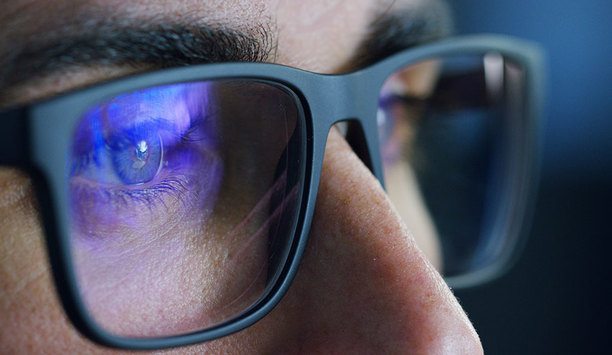
Is your access control as effective as you think?
Download
Making your surveillance cyber secure
Download


Using artificial intelligence (AI) to automate physical security systems
Download
A modern guide to data loss prevention
Download
7 proven solutions for law enforcement key control and asset management
Download
The truth behind 9 mobile access myths
Download
Access control system planning phase 2
Download